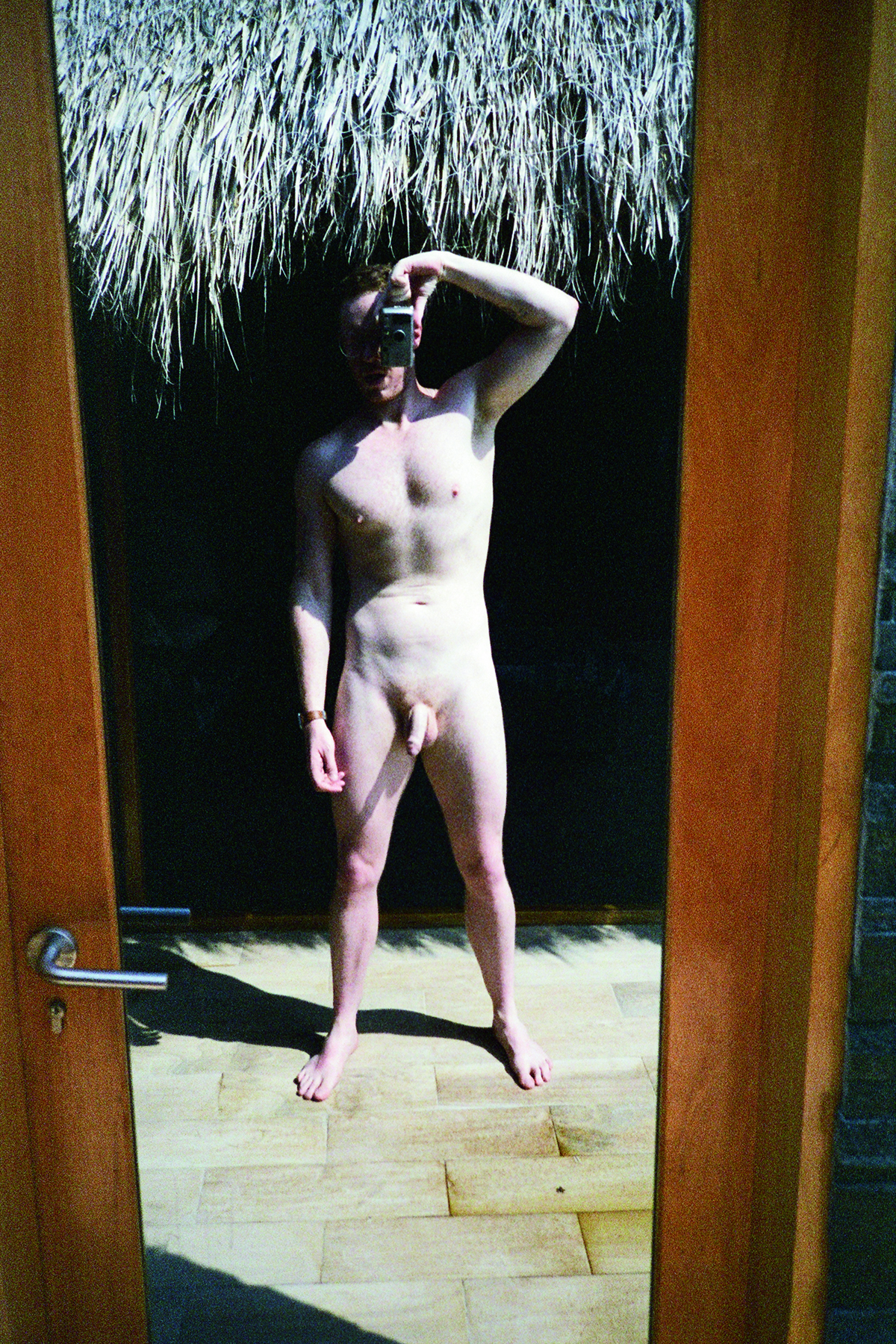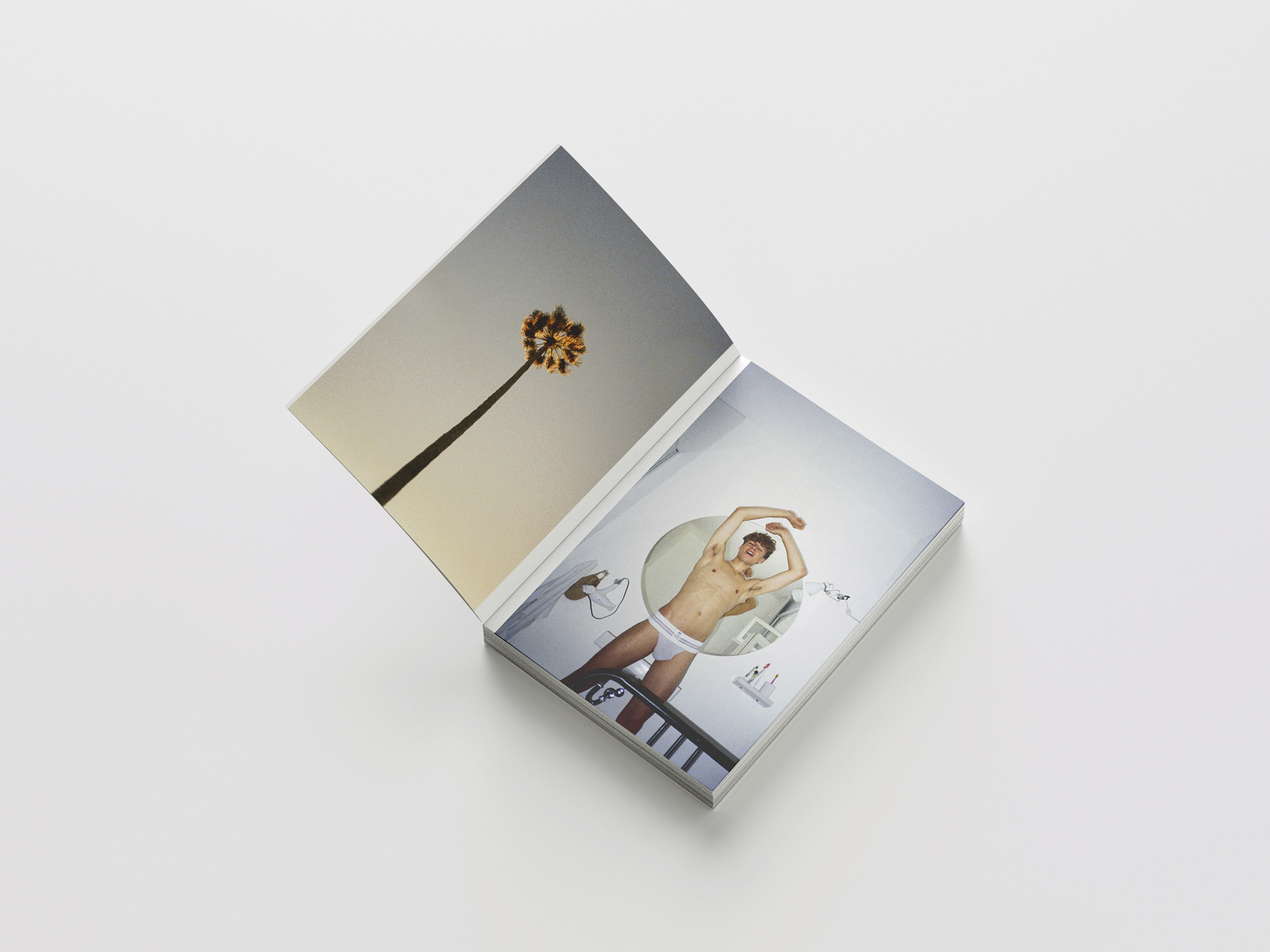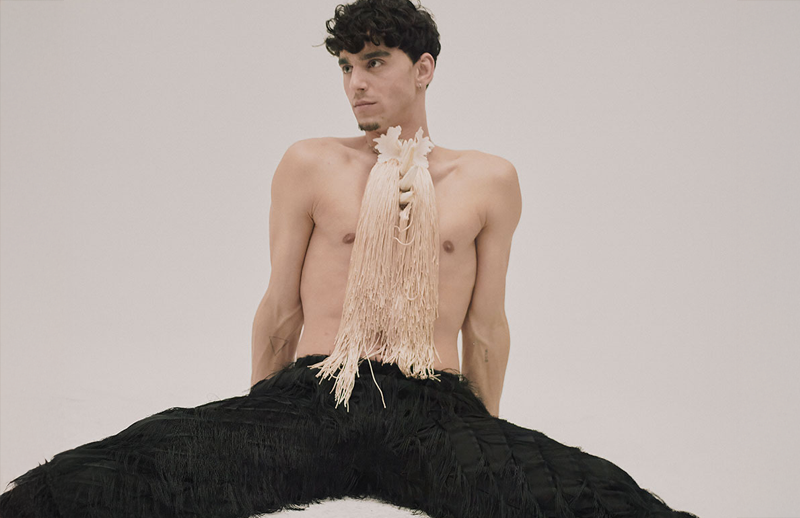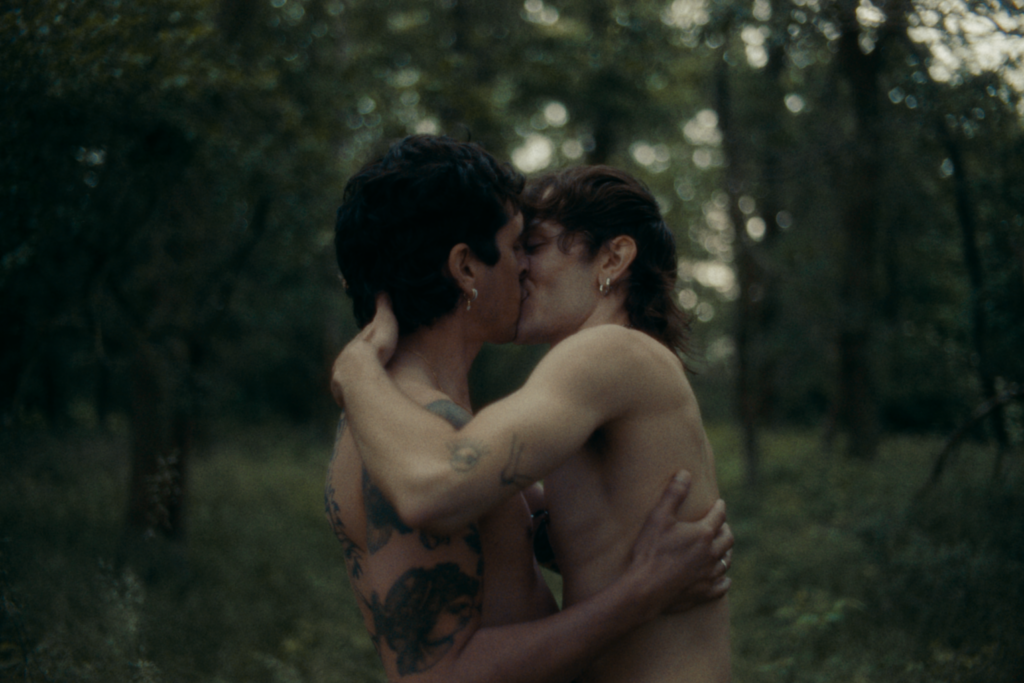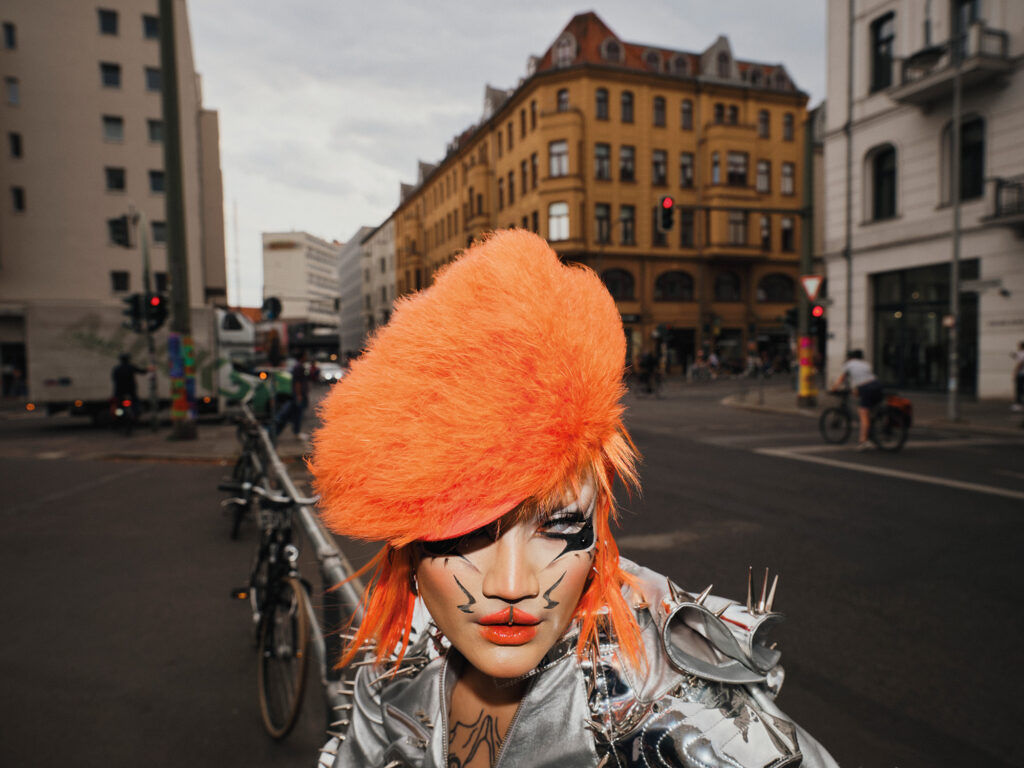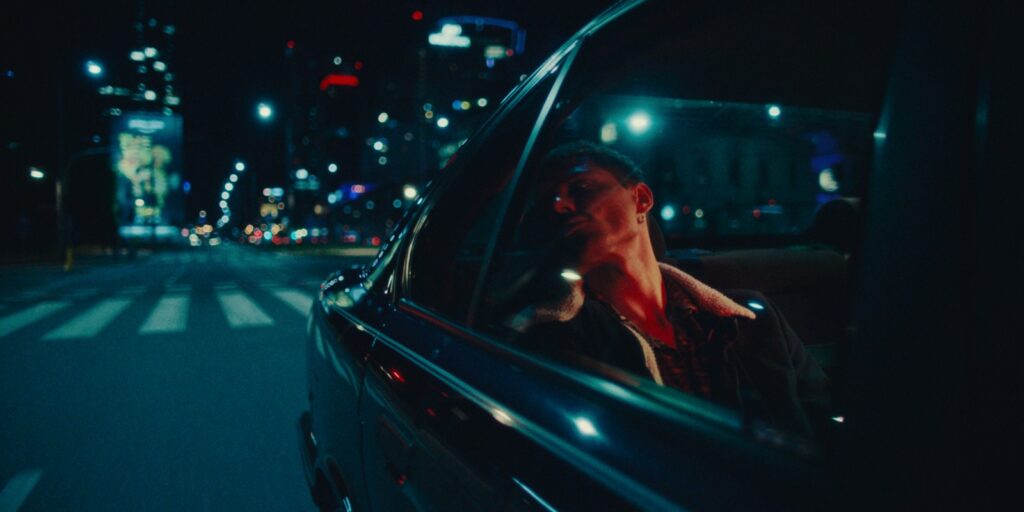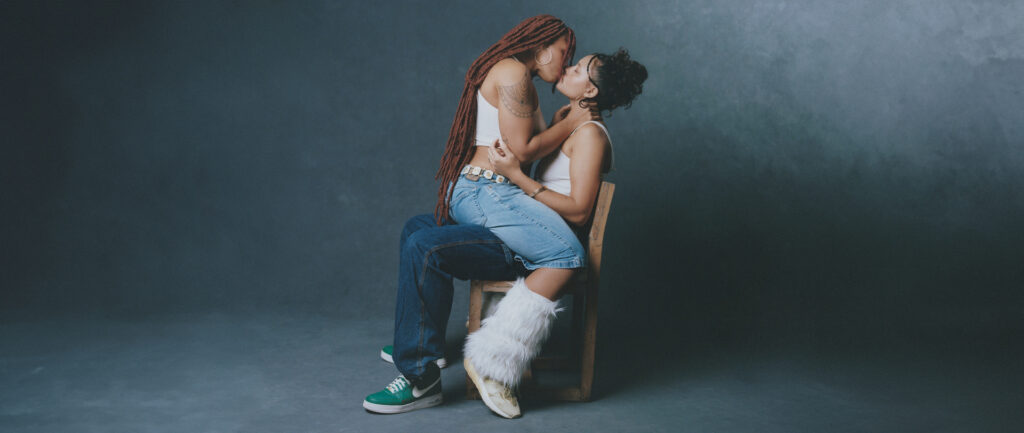Stuart Sandford: Capturing Desire
Artist Stuart Sandford
Words Slava Mogutin
For over two decades, Stuart Sandford has pushed boundaries, exploring the intersections of photography, film, and conceptual art. His provocative work has not only gained recognition for its explicit portrayal of male desire but also stirred conversations about censorship, intimacy, and the role of the male body in contemporary art. Sandford’s early projects, like Cumfaces (2007), challenged the conventions of male erotic art by blending conceptualism with raw, personal sexuality. He reflects on the origin of this series, which began as a commission for Gay Times Magazine, and reveals how it evolved through social media participation at a time when platforms like MySpace allowed for more experimental artistic exchange.
Stuart’s work, informed by both his extensive travels and his engagement with the queer communities in the UK, US and Mexico, often serves as a visual diary of his life and relationships. From his time at the iconic TOM House, where the legacy of Tom of Finland influenced him, to his later experiments with painting, sculpture, 3D scanning and AI, Sandford’s work continuously navigates the tension between public and private, personal and universal. I interviewed Stuart for his upcoming book, XX, documenting two decades of his analog photography.
Slava Mogutin: Two decades of your photography is quite a milestone. I’ve followed your career every step of the way and have always been very fond of your art. Let’s go back to the very beginning. What prompted you to pick up the camera and take your first pictures? Can you recall your first professional shoot?
Stuart Sandford: Thanks so much, Slava. Yeah, it’s crazy, right? So at the time what I really wanted to do was make films. I trained as an actor and wrote screenplays, which I still do, but I realized that I can convey a narrative story into still imagery at a fraction of the expense. Also, it allowed me to work one-on-one with my subject, without a crew. My first shoot when I thought of myself as an artist was in 2004 with a guy called Ryan, a young actor who I knew pretty well. It’s still one of my all-time favourite shoots as it embodied my approach to creating work and capturing something celebratory and playful.

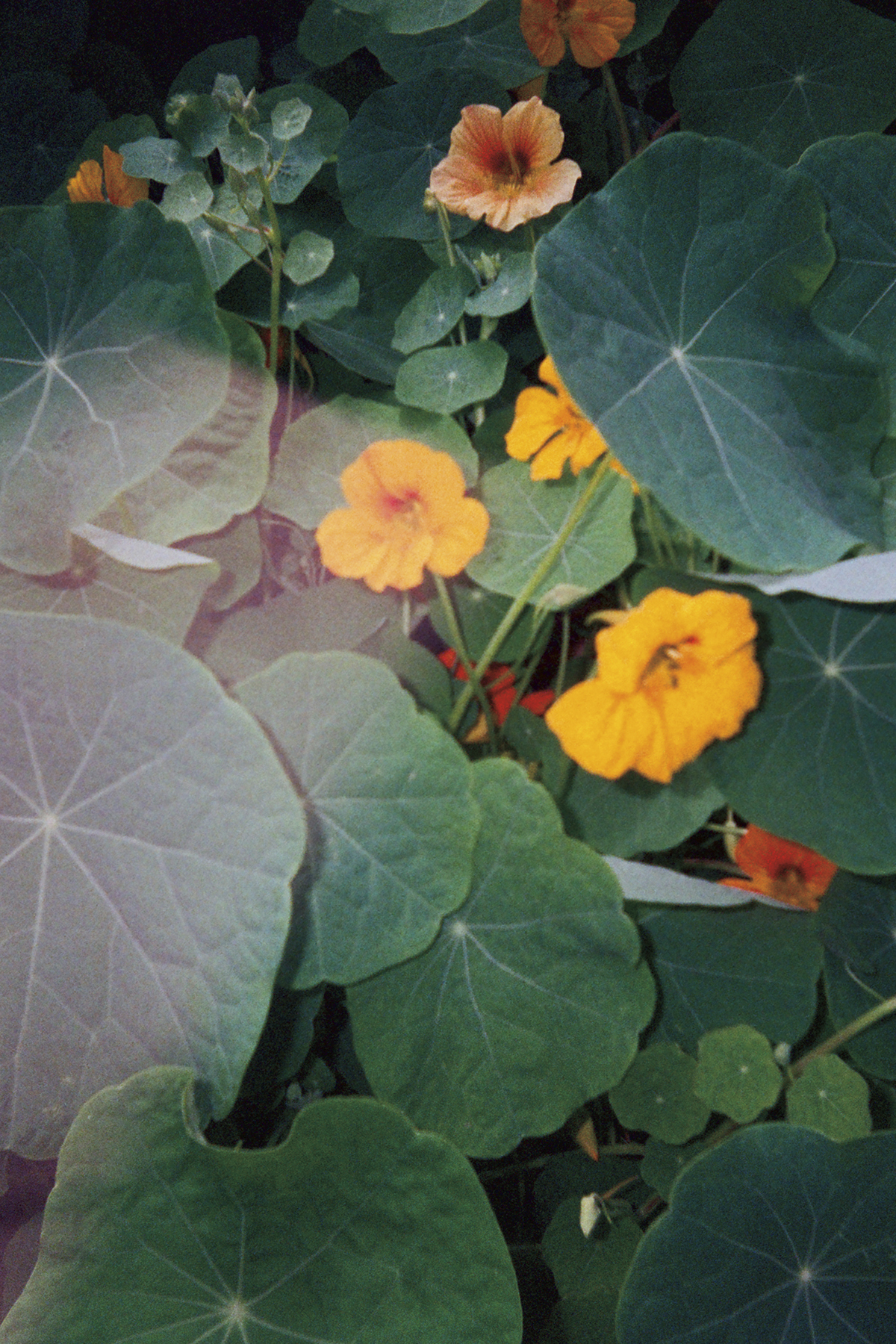
Slava: You gained recognition for your early series titled Cumfaces (2007), which I found very compelling, poetic, intimate, and incredibly sexy. Who were the models for that project and how did it come about?
Stuart: It was originally a commission for Gay Times Magazine here in the UK. I’d done a couple of editorial shoots for them and the editor called me and said, “I just have two words for you: cum faces. What can you do with that?” So I took that and did some research and discovered other artists who’d made works with that concept. Peter Hujar’s Orgasmic Man (1969) is the first one that comes to mind. I wanted to experiment further with the idea though, rather than just taking the photographs myself, so I put a call out on social media – it was MySpace at that time – for selfies shot at the brink of orgasm. I had three stipulations: it had to take place on a bed; it had to be just head and shoulders, I didn’t want to see anything explicit; and it had to be in landscape format. I received about 30 submissions, from both people I knew and didn’t know, and chose 12 which I think were the strongest.
Slava: It’s fair to say that your first photo series was a conceptual project, which is not commonly found in most male erotic art. How would you define your art and the genres you are exploring? And how much does the erotic, libidinal energy influence your creative approach?
Stuart: I’ve always enjoyed experimenting with that idea of what art can be and what constitutes art making or even an artist. Do I need to take a photograph? Can I appropriate a photograph or, say, a magazine image or a moving image? It’s all about experimentation. Anything can be art! Actually, I’ve done that quite a few times using appropriated material, I really enjoy the process. I think the first time I did it was when I slowed down Ferris Bueller’s Day Off to 1/16th speed and titled it 24 Hour Day Off (2009). I was referencing Douglas Gordon’s 1993 work 24 Hour Psycho but also, yes, my libidinal and erotic desire for Matthew Broderick, as well as taking the film to its logical conclusion, in a tongue-firmly-in-cheek manner of having to spend a whole day viewing the work. I showed that in 2009 in New York at Envoy Enterprises, which I think you also worked with, right? Later I appropriated images of 80s and 90s teen idols for books, exhibitions and paintings, and even from the website guyswithiphones.com for the second iteration of the idea of the selfie within my work, Untitled (2010).
Slava: We belong to a generation of queer artists that embraced social media very early on. I built my first queer art network through my Pinko Commie Fag Blog on Blogspot, which functioned as an online curatorial project. I recall the early days of the Internet when we felt like we were part of a global community. However, big tech companies quickly found ways to control and police our community and impose draconian, often homophobic corporate guidelines that stifle free speech and artistic expression. I was censored across all platforms–from MySpace, Blogspot, and Tumblr to Instagram, Facebook and YouTube. Virtually every queer artist I know has had a similar unfortunate experience. Can you share your experience with online censorship and how it affected your work?
Stuart: It’s fascinating how much the Internet and social media can be so divisive and so isolating to many but still have the power to bring people together, albeit sometimes, as you say, in a heavily censored state. I wouldn’t have met you if it weren’t for the internet and I do remember Pinko Commie Fag Blog! I knew your work, and I managed to connect online with Billy Miller of Straight to Hell. When I came to New York, that’s where we first met–I was intimidated and in awe, that’s for sure–and Brian Kenny, Gio Black Pete and other fellow artists, all thanks to the Internet. Queer artists are censored all the time by these platforms and it’s quite exhausting to continually fight to be able to simply share your work. I had an issue recently with the collaboration I was a part of with the Tom of Finland Foundation and Diesel. They’ve featured some of my Polaroid works in their 2024 Pride capsule collection and shared them on Instagram and they looked great but when I tried to share them it was immediately removed and I was threatened with being kicked off the platform. Like what? Diesel–who, of course, brings advertising revenue to the platform—can show my work but I can’t? It’s so stupid and frustrating… All I can say: FUCK CENSORSHIP!


Slava: What was your first lucky break as an artist? And what was the first disappointment?
Stuart: Probably when I was invited to do a residency at TOM House in LA in 2014. That’s when my art practice really flourished. And I have Gary Everett to thank for that, he introduced me to Durk Dehner, the founder of the Tom of Finland Foundation who invited me to the house. I was supposed to be there for three months, but ended up staying for six years! It was an incredible experience. I met many amazing people and artists through the Foundation, and it truly feels like a family there. And my first disappointment? Probably not getting to do a show of my photography in New York when I was living there before moving to LA.
Slava: Six years is an eternity in the gay world! How much did Tom of Finland’s art and aesthetic influence and inform your work? And can you give us a glimpse of what your life at TOM House was like? We want some juicy details!
Stuart: It was quite a ride! Usually, I need a lot of time to myself and I’m not used to always being “on” and that’s not always easy to negotiate at TOM House when there are lots of events happening and there’s so much traffic. I mean, granted, I created a lot of traffic myself, as I brought a lot of guests there to the house and my room, of course–everyone wanted to see it. As you know, it’s quite a magical space, we’ve hung out there together quite a few times. Tom’s work didn’t necessarily influence me aesthetically, but what I’ve always loved about it is that it’s about joy and celebration, and authentic connection. For juicy stories, you’ll have to ask some of my guests!
Slava: I remember when you decided to quit your career as an artist and wrote an open letter explaining your reasons for that decision. It was a very intriguing document that many emerging artists, including myself, could relate to. Can you summarise and explain it here? How do you feel about that drastic decision after all these years?
Stuart: Well, I was very unsuccessful in quitting as you can see! It was just the realization, and I think everyone who calls themselves an artist goes through this, and perhaps many times in their lives, that it’s going to be an incredibly difficult journey, one that might not even be a successful – however you interpret success – journey. And a lot of it doesn’t even come down to being talented or gifted in your field, but having good connections or coming from money or just being in the right place at the right time. So, yeah, I just took some time away from it and reevaluated and eventually came to the conclusion that it was worth it and that I was no good at doing anything else.
Slava: Another interesting point in your creative journey was your decision to become a bodybuilder. It was a personal yet conceptual project that was applauded by some of your friends and patrons and criticized by others. In my view, it was an interesting twist and commentary on the narcissistic nature of contemporary pop culture–before social media unleashed the tsunami of shameless exhibitionism and self-exposure. What was the main motivation behind that project, besides getting buff?
Stuart: It’s always interesting when an artist pivots to a new way of working. People saw me as a photographer, which I never called myself. It’s the same as when I started making sculpture, I think a lot of folks didn’t quite get it, but to me, it’s always about the concept that defines the media that I use. So Bodybuilding was my response to the Olympics in London back in 2012. Much of the funding for creative bodies, for example, Arts Council England, had been diverted to the behemoth that is mounting the Olympic Games. So many smaller arts organizations, regional galleries, artist spaces and theatres lost their funding and were forced to close. I wanted to comment on that, in a playful and tongue-in-cheek way, which is often how I approach my practice, and thought—well, as the old saying goes, if you can’t beat them, join them. So I trained using bodybuilding techniques and changing my diet and I documented it with photos and videos. Ultimately though, about five months in, I abandoned the project, as I found it unsustainable to keep training and eating in that way but, yeah, the upside was I did get a little more buff!
Slava: I’m always fascinated by artists who work with the human form, particularly in creating explicit queer imagery. Please discuss the challenges of producing such intimate photos and your approach to working with your subjects.
Stuart: I think we can agree that the human body in all its myriad beauty is the most interesting subject. Most of the people I work with are either friends or lovers, so there’s already an existing intimacy there and that’s what I’m striving to depict: intimacy in all its forms. When it’s someone new who perhaps asks me to photograph them, or it’s for a specific project, it’s not always easy to create those moments of perceived intimacy. However, I’ve always been told that I’m good at making people feel at ease in front of the camera, and that definitely helps.
Slava: As a fellow Aries, I admire your remarkable work ethic and dedication to your art. I can also relate to the fact that you find inspiration not only in people but in different cultures and places–from London to New York to LA to Mexico City. Let’s talk about your relationship with these cities and the way they have impacted your work.
Stuart: Aries rule! Well, I see myself as a global citizen, which, of course, is a very privileged position. I’ve been fortunate to travel a lot because of my work and call several countries and cities home. Certainly, the two places where I’ve felt most at home are Los Angeles and Mexico City, where I’ve spent the majority of the last ten years. I find inspiration in the energy of these two cities. LA is more relaxed, while CDMX is very vibrant, but they have many crossovers and, both being mega-cities, there is always a new place to discover or someone new to meet. And although I have spent time in New York and London, I never had those moments where I thought, yeah, this feels right, this feels like the place I need to be and that inspires me to create.
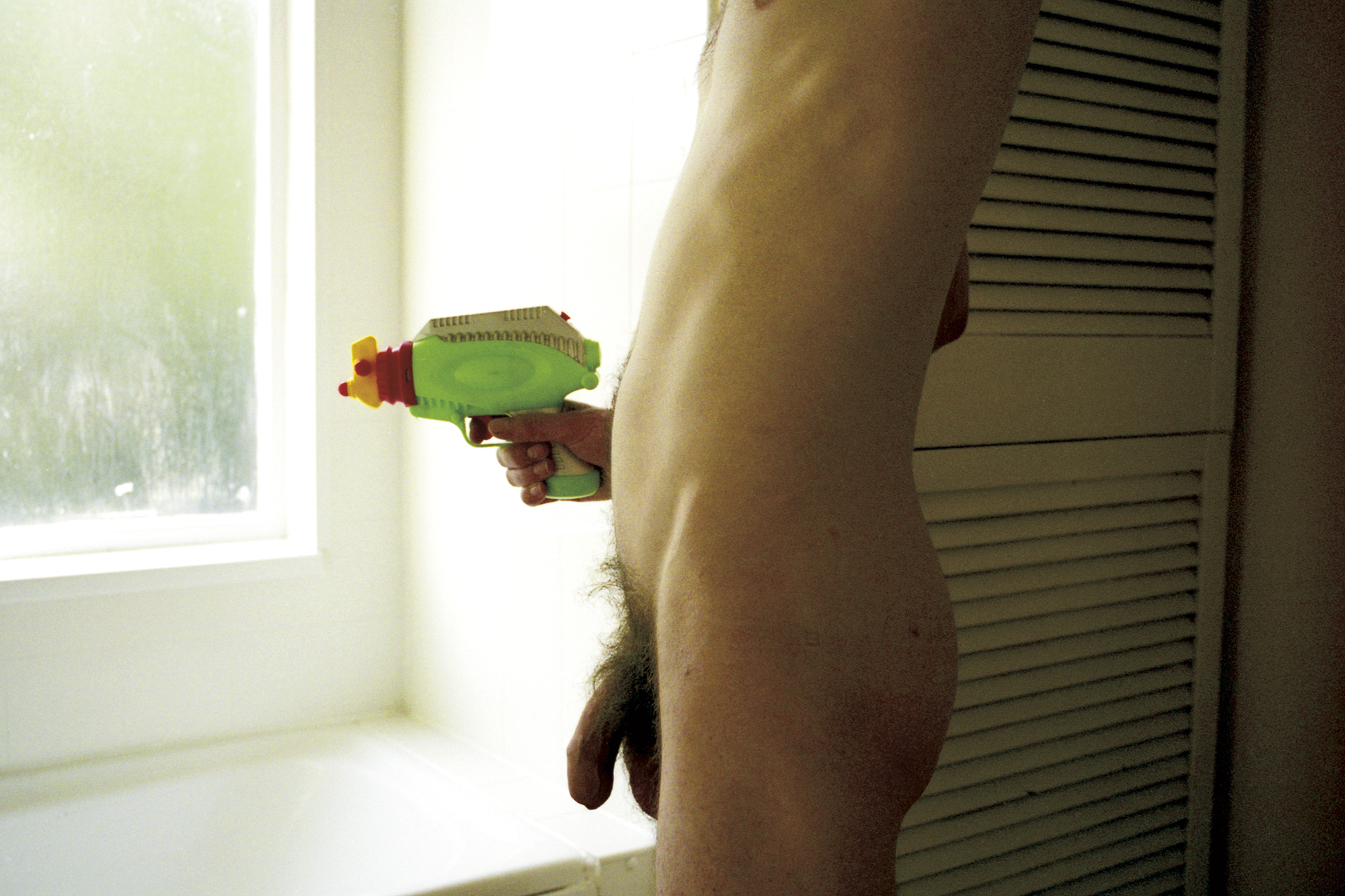
Slava: One of your most renowned bodies of work is Polaroid photography, which is also my preferred medium. In your Polaroid nudes and collages, I see references to many important queer artists from Warhol, Mapplethorpe and David Hockney to Mark Morrisroe and Tom Bianchi. Can you name one particular artist and artwork that influenced you the most?
Stuart: Yes, I really enjoy working with Polaroid. I love the immediacy of it. And yes, I’m definitely drawing inspiration from all those incredible artists you mentioned. We don’t create in a vacuum; all artists build on what’s been done before. As Coco Chanel once said, “Only those with no memory insist on their originality.” And I see a connection with these artists–although I’m not comparing myself to them, of course. Specifically with my Polaroid collages, I’m directly referencing Mapplethorpe and his photography of flowers, as well as the human form. He had an almost erotic way of shooting flowers and that’s something I wanted to embody in this series.
Slava: Of all the intimate images in this book, which one is the most memorable and personal to you?
Stuart: That’s easy. And it’s not just one photo but a few of them actually, all of a guy called Jeff. He’s one of the loves of my life, even if he’s never known this. Well, until now.
Stuart Sandford’s XX is now available.
